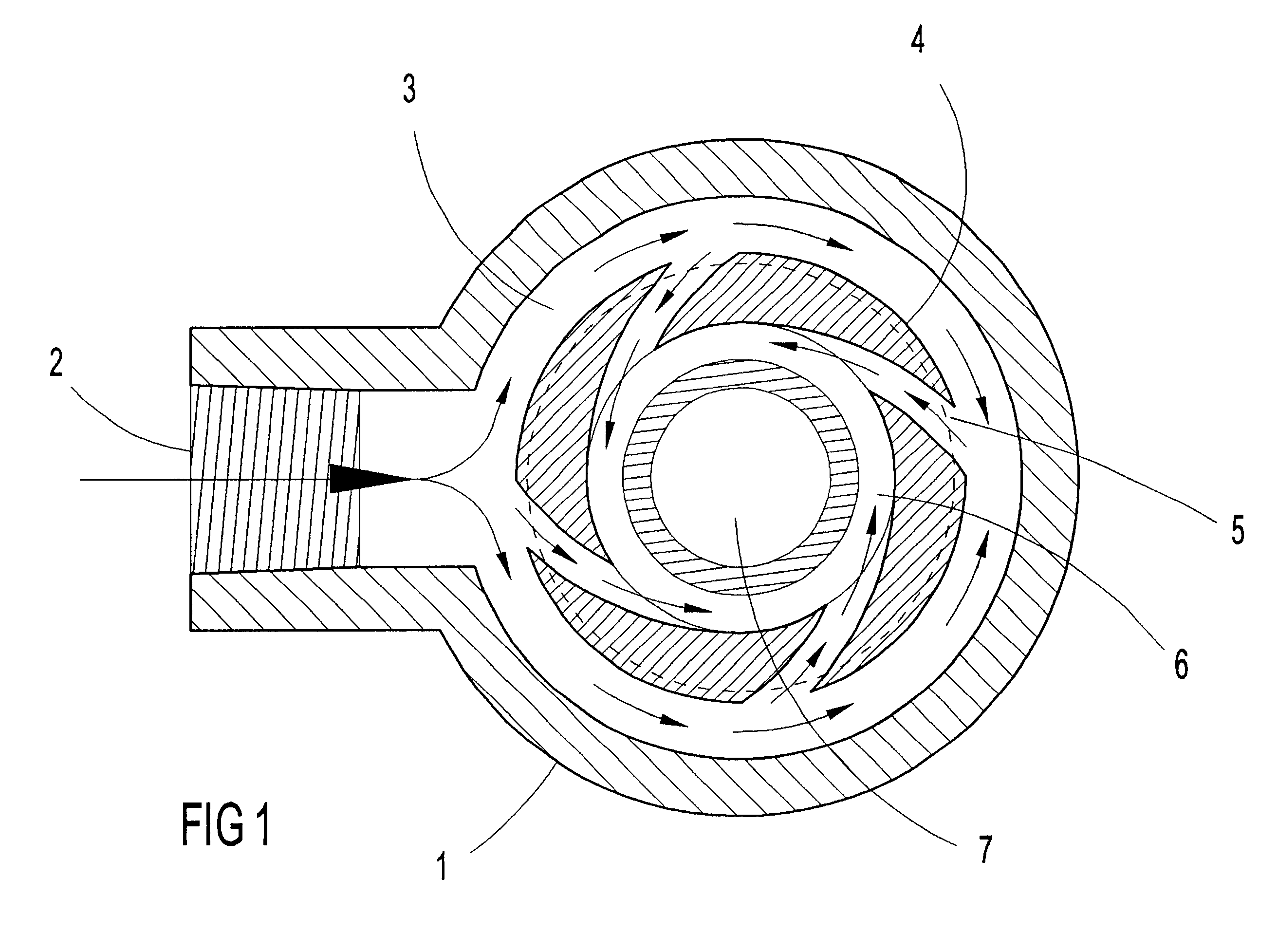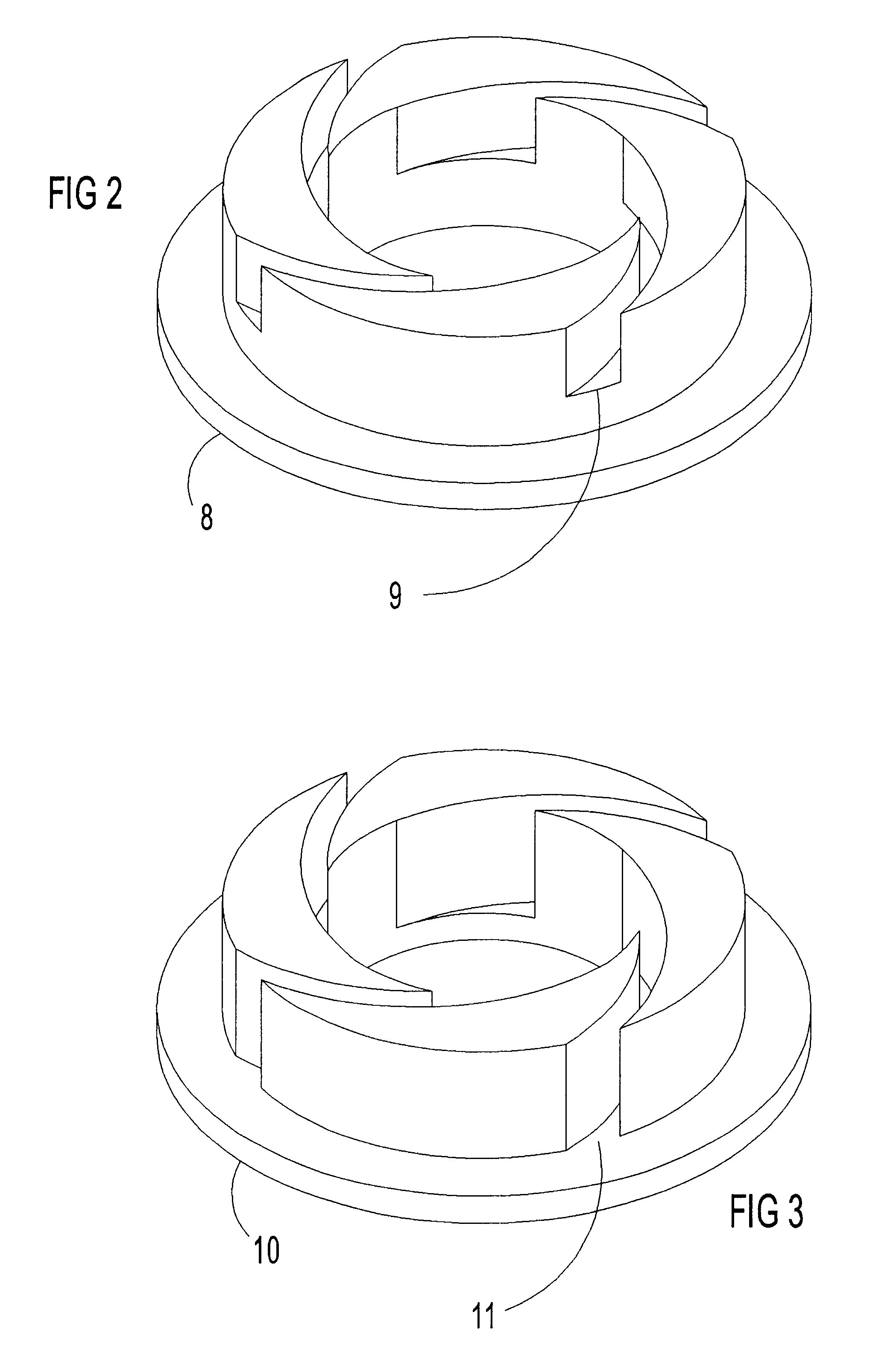Apparatus for mixing fluids
a technology of mixing apparatus and fluid, which is applied in the direction of liquid separation auxillary apparatus, centrifugal force sediment separation, feed/discharge of settling tanks, etc. it can solve the problems of increasing the cost of doing business, clogging up the drain lines from the kitchen to the grease trap, and animal fat rendered during the cooking process
- Summary
- Abstract
- Description
- Claims
- Application Information
AI Technical Summary
Benefits of technology
Problems solved by technology
Method used
Image
Examples
Embodiment Construction
The dynamics of fluid flow generally can be mathematically expressed by conservation of energy, momentum, and impulse. When fluid flows in a curved path, pressure is increased (1) with the radial distance from the center of rotation outward, (2) with the angular velocity of the fluid, and (2) with the unit mass of the fluid. A fluid may rotate in a closed vessel by applying an external force resulting in a forced vortex. If the entire body of fluid rotates together with all particles rotating in a concentric circle, a cylindrical vortex is formed. If radial flow is combined with the circular flow, a forced spiral vortex results. The forced spiral vortex can be used for separation of fluids by density, separation of suspended solids from fluids also by density, and the mixing of various fluids.
Illustrative embodiments of the invention are described below as they might be employed in the use of methods and apparatus for separating fluids, mixing fluids, and separating solids from flui...
PUM
| Property | Measurement | Unit |
|---|---|---|
| cross-sectional area | aaaaa | aaaaa |
| velocity | aaaaa | aaaaa |
| velocity | aaaaa | aaaaa |
Abstract
Description
Claims
Application Information
 Login to View More
Login to View More - R&D
- Intellectual Property
- Life Sciences
- Materials
- Tech Scout
- Unparalleled Data Quality
- Higher Quality Content
- 60% Fewer Hallucinations
Browse by: Latest US Patents, China's latest patents, Technical Efficacy Thesaurus, Application Domain, Technology Topic, Popular Technical Reports.
© 2025 PatSnap. All rights reserved.Legal|Privacy policy|Modern Slavery Act Transparency Statement|Sitemap|About US| Contact US: help@patsnap.com



